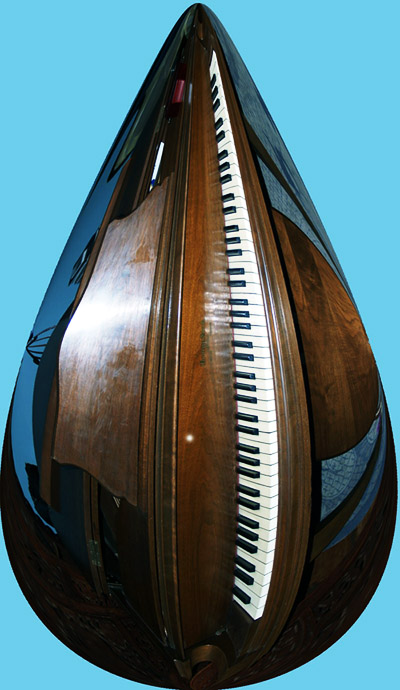John Cage
by Andrew Boyd
Today, guest scientist Andrew Boyd goes silent. The University of Houston presents this series about the machines that make our civilization run, and the people whose ingenuity created them.
"When people know only one name in contemporary music," writes author William Duckworth, "That name is usually John Cage."
Born in 1912, Cage wasn't the first composer to break with the traditional constructs of western music; but his name is all but synonymous with experimentalist music -- music that pushes the boundaries to such extremes that we're left to question if it's really music at all. From early on Cage knew he didn't have an ear for music and realized his contribution would be, in his own word, "invention."
And invent he did. When he couldn't get a full orchestra of percussionists in the same room to perform his compositions, he invented the prepared piano. Bolts, rubber bands, pieces of paper, and anything else he could imagine were attached to the strings inside a piano.
After a life-changing introduction to Eastern philosophy in his mid-thirties, Cage began purposely incorporating randomness in his music. He tossed coins, rolled dice, and used the sixty-four hexagrams of the I Ching to create what he called "nonintentional" compositions. Randomness later became part of the performance, too. In 1961, Cage would compose the Atlas Eclipticalis, written with eighty-six instrumental parts to be played "in whole or in part, any duration, in any ensemble, chamber or orchestral."
In 1959, Carol Lienhard participated in the second performance of Cage's Imaginary Landscape Number Four. The piece was performed with twelve radios and twenty-four musicians, one for each frequency and volume knob. While things had gone well in the rehearsal facility, the metallic structure of the performance hall blocked all incoming radio signals, leaving nothing but static. Cage was delighted. Earlier, during Landscape's premier performance, recordings capture the audience clapping wildly in response to a brief fragment of a Beethoven quartet.
Novel music demanded novel notation. The score for one piece consisted of the single sentence: "In a situation provided with maximum amplification (no feedback), perform a disciplined action."
Cage's most famous work, however, was the controversial Four Minutes and Thirty-Three Seconds (4'33"), consisting of a musician sitting in front of a piano playing absolutely nothing. Cage had conceived of the work many years before it was actually performed, delaying its debut because he rightly believed that people wouldn't take it seriously. In fact, it was intended to make people aware of listening to the sounds that occur around us all of the time. Cursing patrons, crying babies -- they're all part of life's music, and the backdrop against which Cage invented. "No day goes by without my making use of that piece in my life and in my work," proclaimed Cage. "I listen to it every day. Yes I do."
There are those who claim Cage is the most important composer of the twentieth century, just as there are those feel his life's work was intended as a joke; an audio version of the king's new clothes. For myself, having been exposed to Cage's "inventiveness," I know of only one thing for certain: I've never since listened to any piece of music quite the same way.
[5 seconds of awkward silence]
I'm Andy Boyd, at the University of Houston, where we're interested in the way inventive minds work.
Dr. Andrew Boyd is Chief Scientist and Senior Vice President at PROS, a provider of provider of pricing and revenue optimization solutions. Dr. Boyd received his A.B. with Honors at Oberlin College with majors in Mathematics and Economics in 1981, and his Ph.D. in Operations Research from MIT in 1987. Prior to joining PROS, he enjoyed a successful ten-year career as a university professor.
Many thanks to John Whiting for his eyewitness details regarding performances of Imaginary Landscape No. 2. Some of the material for this essay was taken from William Duckworth's interview with John Cage late in the composer's life as captured in Talking Music, Da Capo Press, 1999, first published by Schirmer Books, New York, 1995.
For more on Cage, click here.

Prepared Piano (Image by JHL)